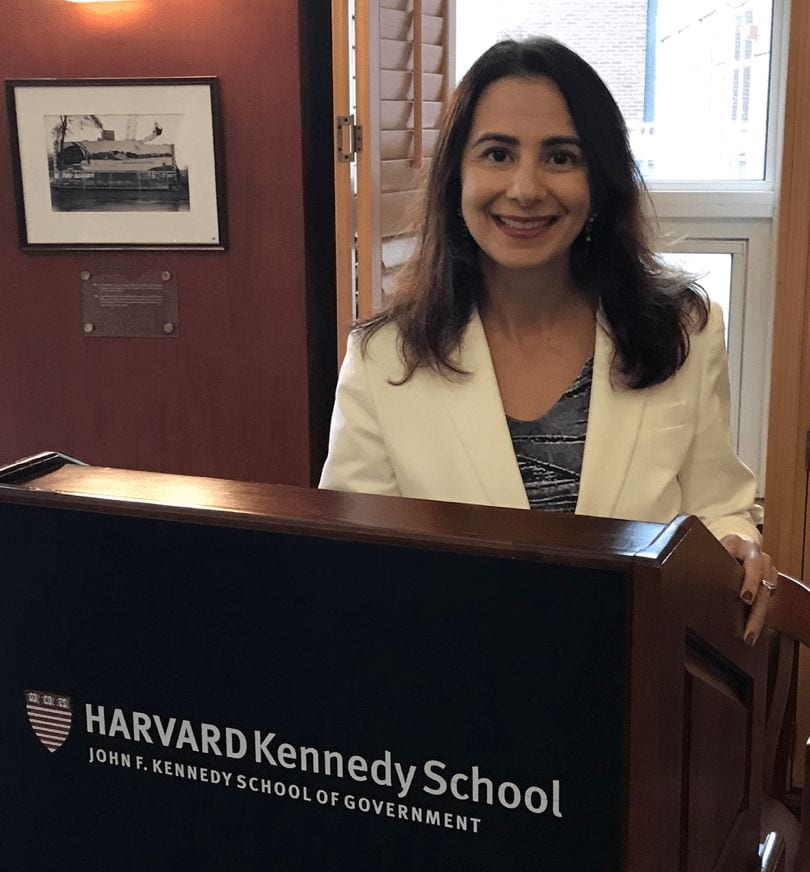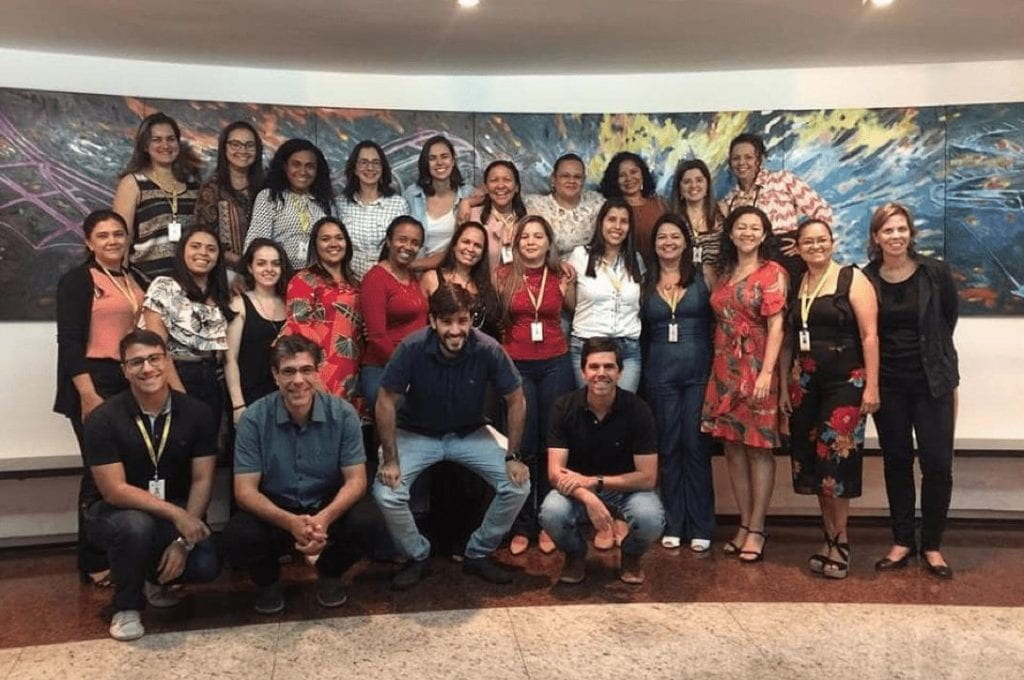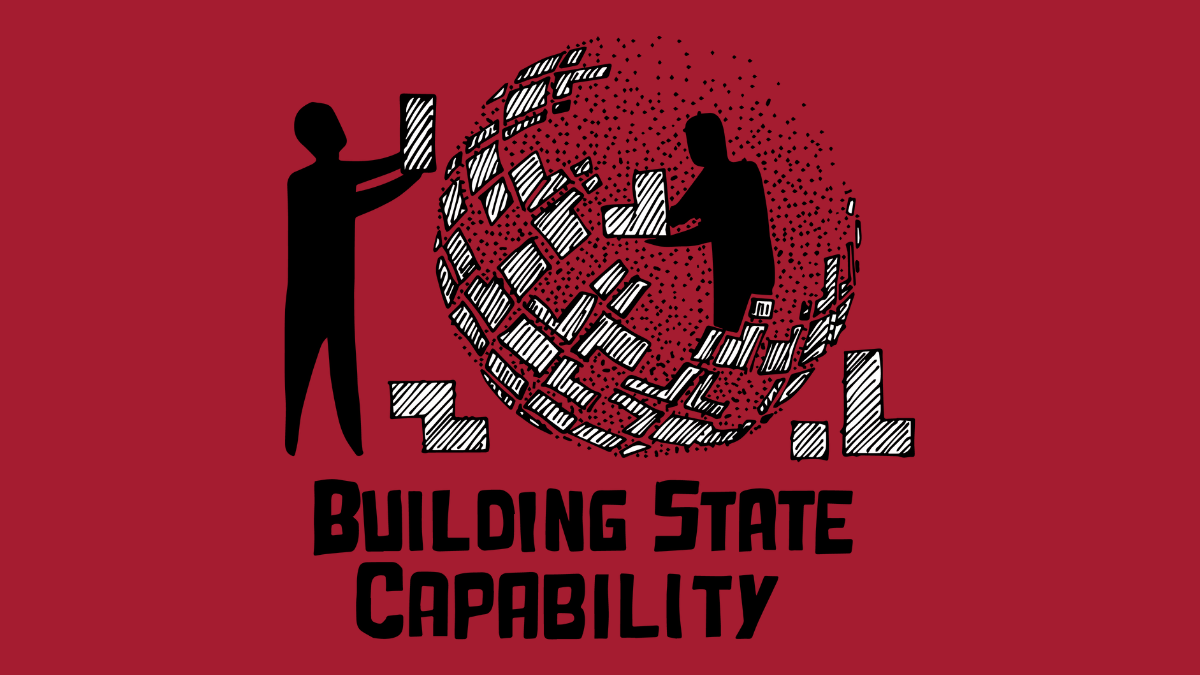Guest blog written by Beatriz Abuchaim

A big headache. It was what I felt in the introductory class at Kennedy School. It was not my first experience at Harvard. I had taken a course in 2018 at Center on the Developing Child, but it didn’t have the same pressure I was feeling as a Public Policy Implementation student. My company was paying for me to be there and Harvard gave me a partial scholarship. While I was listening to Matt introduce the course to us, my painful head did not stop with mixed thoughts: “I should give my best to show I deserve all this investment. I feel so special to represent my country in such a selected group of people. I am worried if I will be able to implement my project”.
When I am overwhelmed with so many feelings my body complains with a migraine. Then I have to stop. It is a way to tell myself: take it easy. Breathe. Calm down. After the first night in pain in Cambridge, I could slow things down. During the week, I felt motivated by the professors and engaged with colleagues. Always feeling exhausted with so many assignments and tasks, but fulfilled. I came back home feeling empowered and secure. And missing my PDIA folks already.
My problem in a few words
Early Childhood Education (ECE) in Brazil currently covers 34% of 0 to 3-year-old population and 93% of 4 to 6-year-old population. These percentages represent eight million children enrolled in ECE. The public sector is responsible for 70% of enrollments. In the past 10 years, we have had a significant increase in the number of enrollments, but with budget limitations, so the quality of services may vary quite substantially nationwide. The municipalities, which are responsible for implementing ECE, are struggling to improve service quality.
Although Early Childhood Education in Brazil has many problems regarding the quality of services, we still do not have a national assessment that could provide data about children’s development and learning environment. Without data, policy managers struggle to plan, improve and make decisions about ECE.
My problem is “lack of systematized information about ECE quality”. Working with PDIA and presenting my fishbone to as many people as I possibly could ended up with 12 causes and 16 subcauses for the problem.

Here I will present three that were my entry points during this year, in other words, the causes I selected to try to address first:
- The education area has criticisms and resistances about ECE assessment, mainly because the teachers are afraid that the results are used in a negative way: to punish them or stigmatize the children with low results.
- Municipal ECE managers are not used to working with data. They do not have access to systematized data, so they did not develop the skills to analyze results and use those to inform policies.
- There are no instruments adapted for the Brazilian context. Until now the assessments implemented in the country used translated instruments, which were not totally suitable for ECE in Brazil.
What I could accomplish
As a way to address these causes, we have assessment projects in three municipalities, who have different challenges and contexts, reflecting the cultural and socioeconomic diversity, which is common in a huge country such as Brazil. Our idea was to adapt an instrument named Measuring Early Learning and Quality Outcomes (an initiative of World Bank and UN). This tool provides information about preschool children learning and development and also about the learning environment (teacher’s planning and practice, materials, infrastructure and interactions). During this year, we have worked with the Secretaries of Education in the three municipalities to adapt a set of tools to be aligned with the National ECE common core, which were suitable to the Brazilian context. In each municipality we have been working with a diverse team, including managers, teachers, parents, supervisors, school principals and others. It has been hard work to bring this people together! On the other hand, it has been very interesting and enriching.
Although the municipalities are different in many ways, we have been facing similar challenges regarding the three As during this year:
Authority: In the three municipalities, we first had authorization from high level professionals, such as the mayor and the secretary of education. It was a long journey to receive authorization from the technical level and also from schools. I have learned that authorization is not something that you get once and the job is done. You have to negotiate during the process with many actors and be authorized in each step of the way.
Acceptance: it has been the hardest part of the journey. Once assessment is not a popular subject in Brazilian ECE, we have been facing some resistance of practitioners in accepting the project. The strategy I have used is to try to engage people. As far as I could understand, engaging in PDIA is not only sharing information about the project. It is important to have people on board discussing, planning, implementing during the whole process. We still face some resistance in the field and my idea to address that is to engage more and more people in the project, so they do not feel the activities are top-down planned.
Ability: in some sites there were poorly assessment educated professionals to work on the project. In the beginning of the project, we had to train them to understand about assessment and ECE quality. This training was a great opportunity to discuss the problem in depth. Now, the data collection is done and we are working together to analyze the data and plan how to use the information to improve quality. We are also supporting them in planning how they are going to report data to services and society.
It has been a process of building capacities and infrastructure with them, to enable assessment system implementation.
What I have learned about PDIA
During this journey, I have learned not only about the challenges of policy implementation, but also about myself. I would like to share the five most important learnings that I have had implementing this approach:
- The problem is broader than the project you are working on. The only way to solve it is to build some common understanding and solutions together with as many people as you can engage.
- It is important to be humble and not assume that you have the solutions for the problem prior to talking to people and testing some strategies.
- It takes time, patience and energy to engage people, even when they care about the problem. You should never give up.
- Empathy is key to engage people. You have to understand that people have different points of view about problems. They might have different solutions in mind. That is why conflicts are a fruitful part of the game.
- All solutions are temporary and you must learn quickly along the way. Allow yourself to take risks and do not be afraid to test some ideas.
The future… new headaches?
As a strategy to push the ECE assessment agenda in Brazil, for 2020 we are planning to implement the methodology we tested this year in 12 municipalities located in the five regions of the country. It will be the first study to cover a large number of municipalities and ECE schools. We believe that it will bring more and more people to the table, so we can discuss about the problem, including public managers, academia, teachers, principals, among others. On the other hand, we are discussing the problem with the Ministry of Education in a series of meetings. We would like them to think about the problem in depth and try to build solutions together for national level.
Personally, I am very excited with the next steps. I am highly motivated to talk to anyone about ECE assessment, even with the people that I know may think different from me. I realize these conversations are opportunities for me to be more flexible and learn how to genuine listen to people. I feel empowered to design a project that really has impacts in the Brazilian ECE. It still brings me mixed feelings: satisfaction, fear, confidence, anxiety, hope. Probably I will have new headaches in the near future. I will work for them not to be in vain.

This is a blog series written by the alumni of the Implementing Public Policy Executive Education Program at the Harvard Kennedy School. Participants successfully completed this 7-month blended learning course in December 2019. These are their learning journey stories.
To learn more about Implementing Public Policy (IPP) watch the course and testimonial video, listen to the podcast, and visit the course website.
